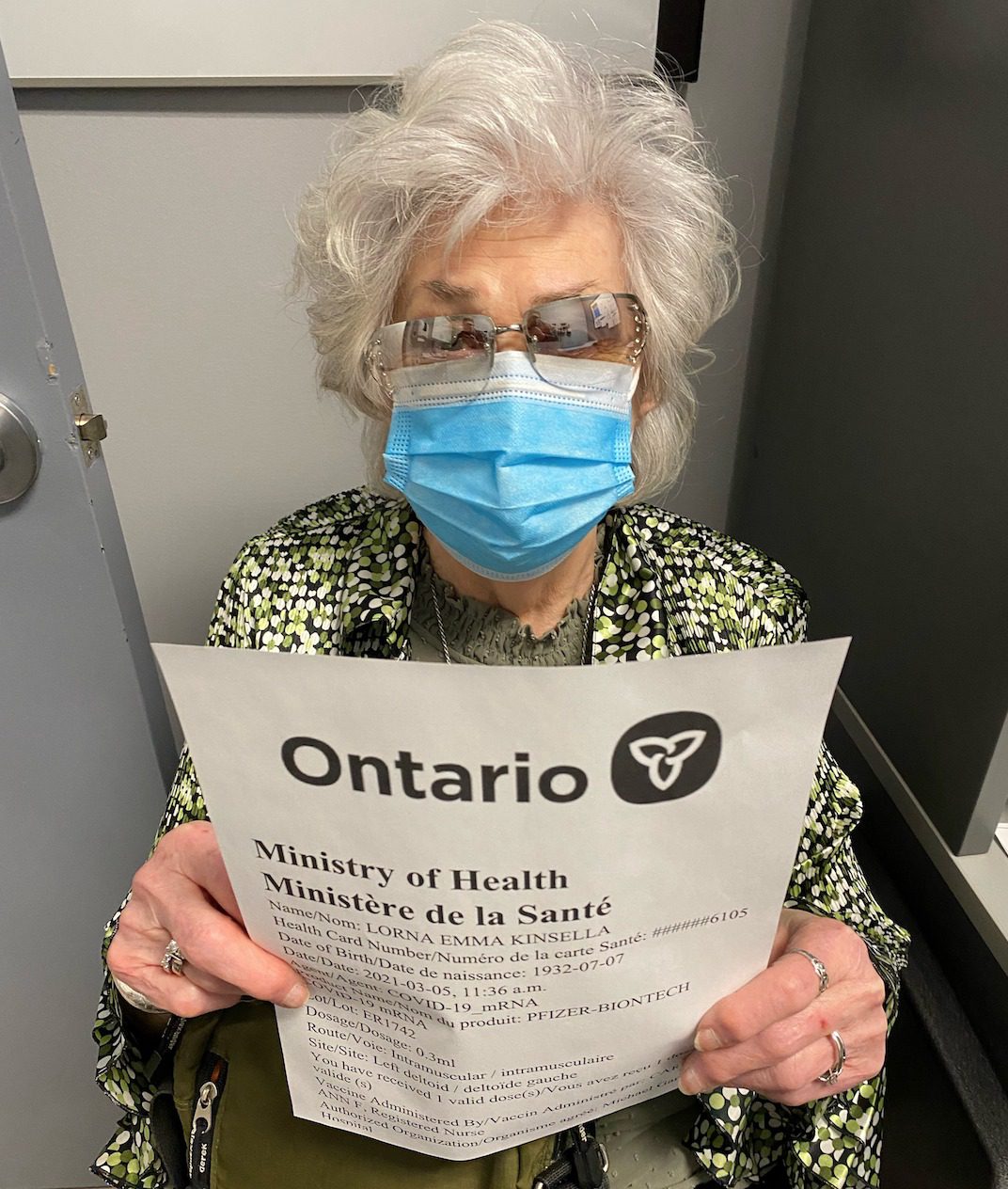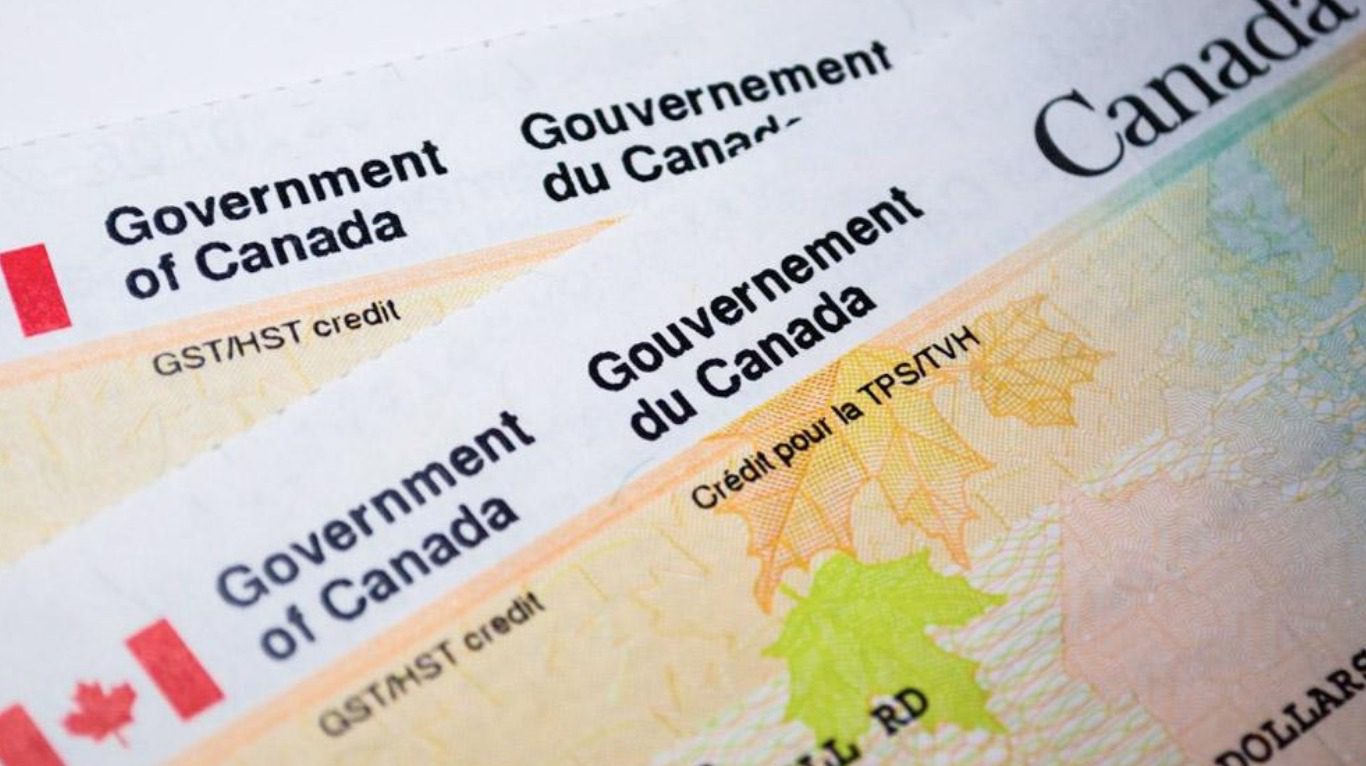Joy.
Relief, too. And excitement. You could feel it.
It was Friday afternoon, and we were waiting for my Mom to get her shot. Out in the clinic's hallways, across the road from Toronto's East-end Michael Garron Hospital, lots of happy chatter and laughter could be heard.
The vaccine had finally arrived. The vaccine was being injected into the arms of seniors.
The joy was a bit infectious. One masked-up woman a finance and systems expert held a clipboard in one hand and a pen in the other. She was there, she said, to ensure that everything was running smoothly. Everything was.
The clinic started vaccinating octogenarians with the Pfizer vaccine on Wednesday. They were doing over a 100 a day, she said, and they hoped to be soon doing many more.
When I told her how everyone seemed so happy and relieved even though double-masked she looked a bit misty-eyed.
"I've experienced so much joy this week," she says, her voicing cracking. "So much joy."
A nurse with an Irish name steps into the tiny room where my Mom and I are waiting. "On the first day, there were lots of tears," she says, extracting from a sealed plastic bag a pre-loaded syringe containing the coveted Pfizer shot. "It's been so hard for a lot of people."
After asking my Mom a series of questions about allergies and symptoms, the nurse plugs some information into a provincial web site called Vaccine Management. She uses her personal cell phone to open it up, to authenticate her identity.
The Ontario government software program is tracking the use of every milliliter of the vaccines, she says. And a pilot program is underway at the hospital, to determine the safest and fastest ways to get the life-saving vaccines into peoples' arms.
We talk about what is happening outside the hospital, in Canada and elsewhere. We talk about the United States.
"I feel so happy for the Americans," the nurse says. "They had such a hard time at the start. So many deaths."
What about Canada, she is asked. Now we are so behind the Americans where they are vaccinating more than two million people a day. Us Canadians, we're not doing as well as we should be.
"It's heartbreaking," she says. "We're so far behind."
And we are. We languish around the sixtieth spot, globally, for vaccines. The Justin Trudeau government is raiding a supply of vaccines set aside for impoverished nations earning itself condemnation from OXFAM and Doctors Without Borders. And people are angry, the pollsters say.
Holding the syringe, the nurse carefully explains to my mother what she may experience. There me be some soreness and redness afterwards, she says. Headache, chills, fatigue. Take a Tylenol to offset all that. Anything more serious? Call 911 and get to the hospital.
But of the nearly 300 vaccinated so far, the nurse assures my Mom, nothing serious has happened yet.
And then she gives my Mom the first of two Pfizer vaccine doses, in her left deltoid muscle. (My Mom is a painter, and intends to use her right arm to paint a big canvas I brought her.).
Above her two masks, I can see my mother's eyes smiling, a bit. The year from Hell is almost over. She is closer to being able to hug her tiny grandson again.
The nurse tells us to wait. Someone else is coming with an Ontario government certificate to verify the first Pfizer dose. It bears the Ontario logo. My mother surveys it.
"I'm very disappointed with the federal government," says my Mom, a lifelong Montréal Liberal. "But I'm happy with Doug Ford. He's trying the best he can, the poor guy."
But that's the political stuff. Today is not a day for politics, my Mom says, as I help her into her coat.
We step out onto Colwell Avenue, where the sun is shining, and where taxis are lined up, to take relieved senior citizens to get their shots. I ask my mother what she feels.
"Relief," she says, as we head to my truck.
"And joy. Lots of joy."
Photo Credit: Warren Kinsella








